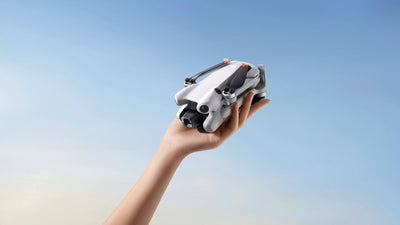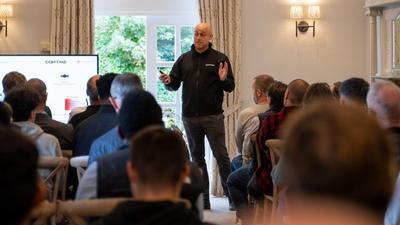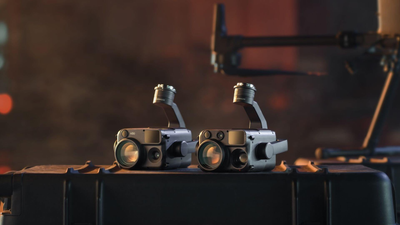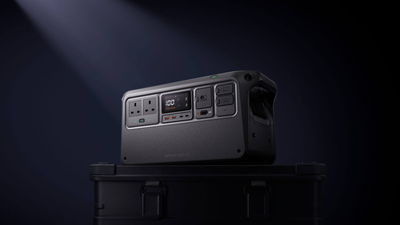How Difficult Is It To Learn To Fly A Drone?
- by Stefan Gandhi
Learning to fly a drone is no longer the challenge it once was. Thanks to rapid advancements in consumer drone technology, aerial photography and flight have become accessible to almost anyone. Whether you are a creative hobbyist looking to capture sweeping landscapes or a first-time flyer eager to explore the skies, today’s drones are designed to flatten the learning curve and elevate your confidence from the very first takeoff.
The Beginner's Flight Path
Flying a drone used to demand a deep understanding of manual controls, wind conditions and orientation. But modern consumer drones have revolutionised the experience. Entry level models now include intelligent automation, safety systems and intuitive interfaces, making the learning curve surprisingly gentle.
Takeoff, hovering and landing can all be managed with a single tap. The drone remains stable mid air thanks to GPS positioning and onboard sensors, allowing you to focus on framing shots and understanding your environment rather than wrestling with joysticks.
Smart Features That Make Learning Simple
Modern drones are not only powerful but also pilot friendly. Here are some standout features that make the first flight feel like second nature:
GPS Stabilisation: This is the backbone of easy drone flight. GPS locks the drone in place mid air, preventing unwanted drift and maintaining altitude. Beginners can take their hands off the controls and trust that the drone will stay put.
Obstacle Avoidance: Equipped with forward, backward and downward sensors, many drones help new pilots avoid collisions. This confidence booster allows beginners to focus on learning rather than worrying about crashing into trees or walls.
Intelligent Flight Modes: Automated flight paths, such as orbits and dramatic pull backs, enable cinematic moves with minimal manual input. These pre-programmed routines let users capture professional looking footage while learning how flight dynamics work.
Beginner Mode: This built in training setting caps your drone’s speed, altitude and range. It creates a controlled airspace where new pilots can safely practise essential manoeuvres without the risk of flying out of sight or control.
Confidence Through Simplicity and Support
Many beginner drones weigh under 250 grams, which can reduce regulatory obligations while remaining fully capable. Despite their compact size, they often feature high resolution video, multiple directional obstacle sensors and extended flight times.
Advanced transmission systems offer strong and stable video feeds to help new pilots maintain situational awareness in real time. User interfaces are typically polished and straightforward, guiding users with tutorials and visual cues.
Practice Makes Confident Pilots
Despite the user-friendly features, flying a drone still involves learning basic skills. Expect to spend time mastering how to control yaw, pitch, throttle and roll. The key to smooth flying lies in muscle memory and anticipation; both developed through repetition.
Start in open fields with minimal obstacles. Practice hovering, slow movements and precision landings. Gradually work up to more complex moves and tighter spaces as your confidence builds. Use the return to home feature as a safety net, ensuring your drone automatically flies back to its takeoff point if connection is lost.
Tools for Training Without Risk
Before even touching the skies, aspiring pilots can sharpen their skills using flight simulators. These virtual environments recreate realistic flight conditions and are invaluable for building muscle memory and troubleshooting common mistakes.
Many drones also feature tutorial videos and guided setup processes within their apps, helping users understand battery safety, firmware updates and maintenance routines; essential aspects of responsible drone operation.
Understanding the Legal Airspace
While flying has become easier, compliance remains essential. In the UK, drones under 250 grams require minimal registration but still demand adherence to flight rules. Always fly within line of sight, avoid restricted zones and maintain respectful distances from people and property.
Familiarising yourself with the Civil Aviation Authority (CAA) regulations is a must. Geo fencing technology can help by alerting or preventing you from flying into no fly zones, such as airports or stadiums.
For those looking to fly commercially or operate larger drones, the UK offers formal training routes. The A2 Certificate of Competency (A2 CofC) is ideal for flying in urban areas with small drones, while the General Visual Line of Sight Certificate (GVC) is a requirement for more complex or professional operations. Both qualifications are available through accredited training providers like Coptrz and can be completed online.
Conclusion
Thanks to the latest innovations, flying a drone has never been more approachable. With beginner friendly features, guided tutorials and robust safety systems, learning is less about trial and error and more about exploration and growth.
Whether you are buying your first drone or returning to the hobby after a break, today’s drones provide the tools and confidence you need to take to the skies with ease.
Ready to get airborne? Visit the Coptrz online store here to explore the best drones, training options and accessories to launch your flight journey with confidence.
FAQs
Do you need a licence to fly a drone in the UK?
If you're wondering "Do I need a drone licence in the UK?", the answer depends on your drone’s weight and purpose. For drones under 250 grams with no camera, no registration is usually needed. However, if your drone has a camera or is used for commercial purposes, you must register for an Operator ID and may need a Flyer ID. Larger drones or professional use may require qualifications like the A2 Certificate of Competency (A2 CofC) or the GVC.
Is it hard to fly a drone for beginners?
Many people ask "How hard is it to fly a drone?", and the good news is that it’s easier than ever. Thanks to GPS stabilisation, auto-hover and beginner modes, learning to fly is straightforward. Most new users can become confident pilots after just a few practice sessions in a safe, open space.
Can I fly a drone indoors to practise?
You might search for 'can you fly a drone indoors', and while it is possible with small toy drones, it’s not recommended for beginners. Indoors usually means limited space and more obstacles. Practising outdoors in a clear area is a safer and more effective way to build confidence.
What happens if I lose connection while flying a drone?
Worried about what happens if you lose signal to your drone? Most drones now come with a built-in return to home function. If signal is lost or the battery gets low, the drone will automatically return to its launch point, helping to prevent flyaways or crashes.
Do drones need a smartphone app to fly?
Yes. If you’re wondering do I need an app to fly a drone, the answer is almost always yes. Most consumer drones connect to a smartphone via a dedicated app, which gives you access to live video feeds, safety alerts and automated flight modes, all from your screen.
Is it safe for kids to fly drones?
Parents often ask "Can kids fly drones?". The answer is yes, under supervision. Drones with capped speed, propeller guards and simplified controls are ideal for children or teens learning to fly for the first time. Always follow local drone safety guidelines.
Is a drone flight simulator worth using?
Searching "Is a drone simulator worth it?". For beginners, absolutely. Simulators replicate real-world flying conditions and are great for mastering controls without risk. They’re also useful for understanding flight dynamics and avoiding common beginner mistakes. Read our article to learn more about our top FPV drone simulators here.
What mistakes do beginners make when learning how to fly a drone?
Common beginner drone mistakes include flying too close to buildings or trees, ignoring weather conditions and failing to check battery levels. If you’re new and want to know how to fly a drone safely, always start in a wide open area and practise slow, steady movements first.




